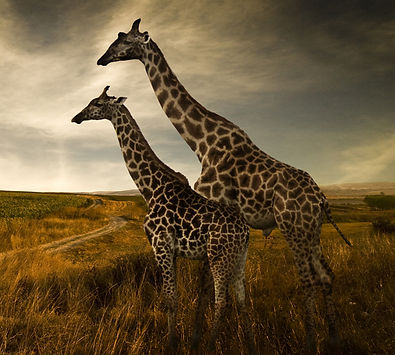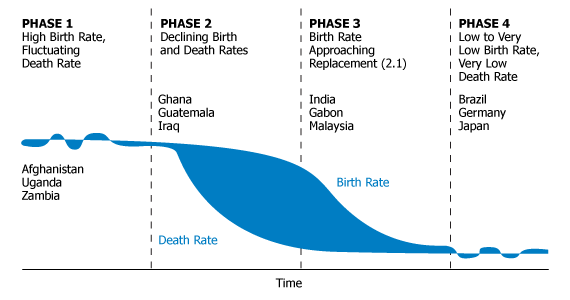
WILLIAM SHEN BLOCK 6 MS VERSTEEG
BIOLOGY AP 12
CHAPTER 53: POPULATION ECOLOGY
What is Population Ecology?
Population ecology is the study of how biotic and abiotic factors influence the density, distribution, size, and age structure of populations.


Notable Experiment
Cor Dijkstra and colleagues in the Netherlands studied the effects of parental caregiving on European kestrels over five years by transferring chicks among nests to produce reduced, normal, and enlarged broods. They observed significantly lower surival rates of parental kestrels with larger broods, indicating that caring for more offspring has a negative effect on the parents.
General Review
Life tables — Age-specific summaries of a population's survival pattern (average life expectancy, death rate, etc).
Cohort — A group of individuals of the same age, which scientists follow from life till death in order to contruct a life table.
Survivorship curve — A graphical representation of the data in a cohort. Shows the proportion or numbers of individuals which are still alive at each age. Below are three idealized survivorship curves. Humans are type 1, while birds are type 2, and pine trees are type 3.
Reproductive table — Age specific summaries of the reproductive rates in a population, again measured via a cohort. The reproductive output for sexual organisms is determined by the product of the proportion of females breeeding at a given age and the number of their offspring which are female.
Life history — The series of changes undergone by an organism during its lifetime, from birth through reproduction to death. It includes the variables of when reproduction begins, how often an organism reproduces, and how many offspring are produced each time.
Semelparity — "Big-bang reproduction," where an organism has one opportunity to reproduce before death. Favorable in harsh or variable environments.
Iteroparity — "Repeated reporduction," characterized by multiple reproductive cycles over the course of an organism's life. This is favorable in environments where at least a portion of the offspring have a good chance of surviving.
Reproductive variables — Generally, plants and animals whose young are subject to high mortality rates produce large numbers of offspring while organisms that feature excess parental investment (whether it be larger and tougher seeds in plants, or parental care in animals) have less offspring.
Characteristics of a Population
The fundamental characteristics of a population are its density, dispersion, and demographics. Density refers to the concentration of individuals in an area (individuals per unit area or volume). Population density can be affected by immigration and emigration, or environmental factors.
Because populations are often too large to count, size and density is often determined using the mark-recapture method.
Research Method
Scientists capture and tag (mark) a random sample of individuals in a population, then release them again. After a few days or weeks, scientists capture a second set of individuals.
Population size = mn
X
n: number of animals captured and marked in the first sampling
m: number of animals captured in second sampling
X: number of marked animals captured in the second sampling
Dispersion regards the amount of spacing between individuals in a population. It can be divided into three major patterns:
Animals that exhibit uniform dispersion usually dispaly territoriality (defensive and antagonistic social interactions).
Demography is the statistical study of populations and how they change over time. This includes birth rates and death rates.


POPULATION GROWTH
Equation
The formula for population growth (ignoring immigrants and emmigrants) is:
rN
Where ΔN is the change in population size, Δt is the change in time, and "r" is the per capita (per average individual) birth rate minus the death rate. The variable "r " indicates whether a population is growing or declining. Zero population growth occurs when the birth and death rates are equal, and r = 0.

Density Regulating Factors
Birth rates and death rates that do not change with density are density independent. In contrast, birth and death rates which change with density are density dependent.
Denisty-dependent regulation factors include:
-
Competition for resources
-
Territoriality
-
Increased severity of disease
-
Increased chance of predation
-
Accumulation of toxic wastes
-
Physiological factors (special hormones which result in negative changes if a population is too large)
Population dynamics — A study which focuses on the complex interactions of biotic and abiotic factors which cause size fluctuation in populations.
Metapopulation — Formed when a number of local populations are linked because they occupy discrete patches of suitable habitat surrounded by uninhabitable space. The importance of immigration and emigration between local populations is emphasized.
Humans
The rate of human population growth is decreasing due to demographic transition:
Demographic transition states that high birth and death rates eventually transition to low birth and death rates as a country develops from a pre-industrial to an industrialized economic system.
Age structure — The relative number of individuals of a population in each age range, usually graphed as pyramids (although fully developed countries have a more equally distributed shape).
Global carrying capacity — Current estimates of the total amount of humans the biosphere can support are around 10-15 billion people.
Ecological footprint — A concept which summarizes the amount of land and water required by each person, city, or nation to produce its resources and absorb its wastes.


GROWTH MODELS
Exponential Growth
All species have the ability to expand immensely if given the ideal conditions. The per capita rate of increase is at its maximum in exponential population growth (also called geometric population growth).
It is impossible for unlimited growth to occur for long periods of time in nature.

Logistic Growth
The logistic model is more realistic for populations in nature and is useful for predicting population growth. Crowding and resource limitation have a negative impact on individuals. Carrying capacity (the maximum sustainable population size) is symbolized as K in the equation for logistic growth:
Note: d = Δ
Life history patterns are considered: density dependent K-selection, as well as density independent r-selection, which are named after the variables in the equation.
